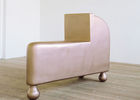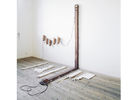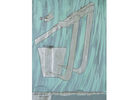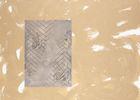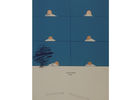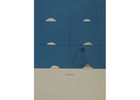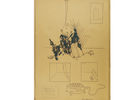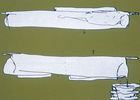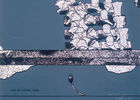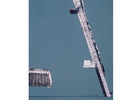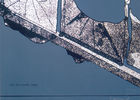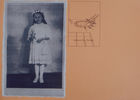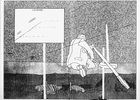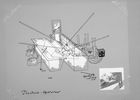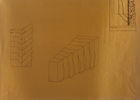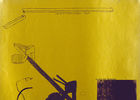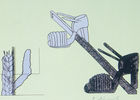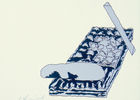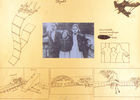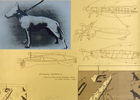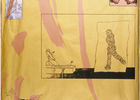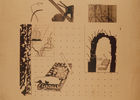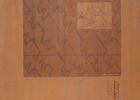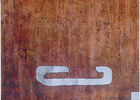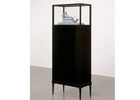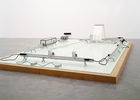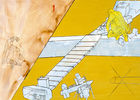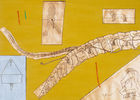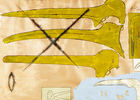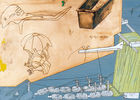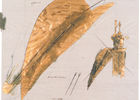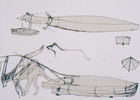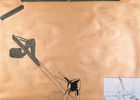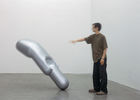Bruno Gironcoli
Biographie
Bruno Gironcoli was born in Villach in the Austrian province of Carinthia in 1936 and grew up there and in Innsbruck, Austria, but also in Frankfurt-on-the-Main, Germany. After an apprenticeship as a gold, silver, and coppersmith in Innsbruck (1951-56), he continued his studies between 1957-63 at the University of Applied Arts in Vienna. In 1977 he succeeded Fritz Wotruba as professor at Vienna’s Academy of Fine Arts. Bruno Gironcoli was awarded the Generali Foundation’s sculpture prize in 1989, the Grand Prize of the Austrian State in 1995 and in 1997 he was the recipient of the Austrian Medal for Science and Art. After long illness he passed away 2010 in Vienna.
Additional biography
His first fragile wire objects in the early 1960s reflect the artist’s preoccupation with presentations of the human figure in three-dimensional space. A fundamental mid-decade revision of his creative outlook led to a preference for the use of polyester as a raw material. At his first solo exhibition in 1968 at the "Galerie nächst St. Stephan," he showed sculptures that bordered on design. A striking "Polyesterobjekt" (1966) brightened with copper paint, although reminiscent of a perambulator, appears to be hermetically sealing itself off against being employed in that function. The object stands on three legs and would not lose its balance even on a less-than-level surface, whereas another figure, "Figur auf nur einem Punkt stehend" (1965), has been constructed so as to "stand on a single point" and for this reason finds itself in a constant state of imbalance. In 1968, Gironcoli, together with Hans Hollein and Walter Pichler, among others, took part in the legendary "Super Design" exhibition at the above gallery. As one of a handful of artists in Austria at this time, Gironcoli developed a body of work principally set apart from the dominant Wotruba school. He preferred to orientate himself on international examples, thus expanding his artistic range from anthropomorphic individual objects to complex installations. "Objekt, Teilstück eines Innenraumes" (1967) is an early manifestation of this tendency. Here Gironcoli openly acknowledges his singular position in the Austrian tradition of sculptural work. He was able to show "Schuhe" (1970-71), one of his central installations about the fetish character of personal objects, at the Biennale of São Paulo and again later, in 1971, in another solo exhibition at the."Galerie nächst St. Stephan." In 1977, Gironcoli presented his works for the first time in a large solo exhibition at the Museum of the 20th Century in Vienna. It was also shown at the Kunstverein Frankfurt and the Lenbachhaus in Munich, Germany. The characteristic surfaces of his creations and paper works, gleaming with metallic paint, reflect a fascination with precious metals. For his creations, which are dominated by the themes of power, sexuality, and fertility, Gironcoli developed a very personal iconography. Sexuality is expressed as repression or perversion in what tends to be a more masochistic and sadistic mold, or as a sublimation of lower middle-class acts of compensation. In some of the other works, an electric functionality is suggested. A series of experimental screen prints from the 1970s admits deep insights into his world of artistic ideas. Gironcoli was one of the first artists in Austria to employ the symbolism of the swastika in an effort to focus on the fascist era. The professorship at the sculpture class, which Gironcoli took over in the late 1970s, exercised a considerable influence on the subsequent development of his work. Since the 1980s, sculptures of increasingly gargantuan proportions, given over to the thematic triad of father, mother, and child, have emerged from his large, new studio spaces. Biomorphic and anthropomorphic shapes as well as powerful, intentionally symbolic motifs derived from quotidian objects have put their stamp on these sculptures which are enhanced by a baroque exuberance. All of these figures are conceived as models ultimately intended to be cast in metal. The artist has simulated the project, which remains unfinished due to a lack of money, with a metallic coat of paint. A second important exhibition at the Museum of the 20th Century in Vienna in 1990 was followed in 1997 and 1998 by two further, large exhibitions at the Museum of Applied Art, also in Vienna. In 2003 Bruno Gironcoli officially represented Austria at the 50th Biennale in Venice. The Generali Foundation has gathered together some of the most important works from the 1960s and 1970s of this artist and teacher who was to be extremely influential on the next generation of artists, including Franz West and others. Significantly, "Große Säule mit eingesetzten Augenprothesen" (1969), accompanied by a telephone time check played back on a cassette recorder, stands programmatically at the beginning of a conceptualization of a collection which has developed from a classical definition of sculpture toward an expanded notion of sculptural works in conjunction with new media. (Sabine Breitwieser/Doris Leutgeb)
